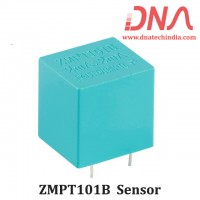The Power Diode |
|
In the previous tutorials we saw that a semiconductor signal diode will only conduct current in one direction from its anode to its cathode (forward direction), but not in the reverse direction acting a bit like an electrical one way valve. A widely used application of this feature is in the conversion of an alternating voltage (AC) into a continuous voltage (DC). In other words, Rectification. Small signal diodes can be used as rectifiers in low-power, low current (less than 1-amp) rectifiers or applications, but were larger forward bias currents or higher reverse bias blocking voltages are involved the PN junction of a small signal diode would eventually overheat and melt so larger more robust Power Diodes are used instead. |
|
The power semiconductor diode, known simply as the Power Diode, has a much larger PN junction area compared to its smaller signal diode cousin, resulting in a high forward current capability of up to several hundred amps (KA) and a reverse blocking voltage of up to several thousand volts (KV). Since the power diode has a large PN junction, it is not suitable for high frequency applications above 1MHz, but special and expensive high frequency, high current diodes are available. For high frequency rectifier applications Schottky Diodes are generally used because of their short reverse recovery time and low voltage drop in their forward bias condition. |
|
Power diodes provide uncontrolled rectification of power and are used in applications such as battery charging and DC power supplies as well as AC rectifiers and inverters. Due to their high current and voltage characteristics they can also be used as freewheeling diodes and snubber networks. Power diodes are designed to have a forward "ON" resistance of fractions of an Ohm while their reverse blocking resistance is in the mega-Ohms range. Some of the larger value power diodes are designed to be "stud mounted" onto heatsinks reducing their thermal resistance to between 0.1 to 1oC/Watt. |
|
If an alternating voltage is applied across a power diode, during the positive half cycle the diode will conduct passing current and during the negative half cycle the diode will not conduct blocking the flow of current. Then conduction through the power diode only occurs during the positive half cycle and is therefore unidirectional i.e. DC as shown. |
|
|
Power Diode Rectifier |
|
|
|
Power diodes can be used individually as above or connected together to produce a variety of rectifier circuits such as "Half-Wave", "Full-Wave" or as "Bridge Rectifiers". Each type of rectifier circuit can be classed as either uncontrolled, half-controlled or fully controlled were an uncontrolled rectifier uses only power diodes, a fully controlled rectifier uses thyristors (SCRs) and a half controlled rectifier is a mixture of both diodes and thyristors. The most commonly used individual power diode for basic electronics applications is the general purpose 1N400x Series Glass Passivated type rectifying diode with standard ratings of continuous forward rectified current of 1.0 amp and reverse blocking voltage ratings from 50v for the 1N4001 up to 1000v for the 1N4007, with the small 1N4007GP being the most popular for general purpose mains voltage rectification. |
|
|
Half Wave Rectification |
|
A rectifier is a circuit which converts the Alternating Current (AC) input power into a Direct Current (DC) output power. The input power supply may be either a single-phase or a multi-phase supply with the simplest of all the rectifier circuits being that of the Half Wave Rectifier. The power diode in a half wave rectifier circuit passes just one half of each complete sine wave of the AC supply in order to convert it into a DC supply. Then this type of circuit is called a "half-wave" rectifier because it passes only half of the incoming AC power supply as shown below. |
|
|
Half Wave Rectifier Circuit |
|
|
| During each "positive" half cycle of the AC sine wave, the diode is forward biased as the anode is positive with respect to the cathode resulting in current flowing through the diode. Since the DC load is resistive (resistor, R), the current flowing in the load resistor is therefore proportional to the voltage (Ohm´s Law), and the voltage across the load resistor will therefore be the same as the supply voltage, Vs (minus Vf), that is the "DC" voltage across the load is sinusoidal for the first half cycle only so Vout = Vs. |
|
During each "negative" half cycle of the AC sine wave, the diode is reverse biased as the anode is negative with respect to the cathode therefore, No current flows through the diode or circuit. Then in the negative half cycle of the supply, no current flows in the load resistor as no voltage appears across it so Vout = 0. |
|
The current on the DC side of the circuit flows in one direction only making the circuit Unidirectional and the value of the DC voltage VDC across the load resistor is calculated as follows. |
|
|
|
Where: Vmax is the maximum voltage value of the AC supply, and VS is the r.m.s. value of the supply. |
|
|
Example No1. |
|
Calculate the current, ( IDC ) flowing through a 100Ω resistor connected to a 240v single phase half-wave rectifier as shown above. Also calculate the power consumed by the load. |
|
|
|
During the rectification process the resultant output DC voltage and current are therefore both "ON" and "OFF" during every cycle. As the voltage across the load resistor is only present during the positive half of the cycle (50% of the input waveform), this results in a low average DC value being supplied to the load. The variation of the rectified output waveform between this ON and OFF condition produces a waveform which has large amounts of "ripple" which is an undesirable feature. The resultant DC ripple has a frequency that is equal to that of the AC supply frequency. |
|
Very often when rectifying an alternating voltage we wish to produce a "steady" and continuous DC voltage free from any voltage variations or ripple. One way of doing this is to connect a large value Capacitor across the output voltage terminals in parallel with the load resistor as shown below. This type of capacitor is known commonly as a "Reservoir" or Smoothing Capacitor. |
|
|
Half-wave Rectifier with Smoothing Capacitor |
|
|
|
When rectification is used to provide a direct voltage power supply from an alternating source, the amount of ripple can be further reduced by using larger value capacitors but there are limits both on cost and size. For a given capacitor value, a greater load current (smaller load resistor) will discharge the capacitor more quickly (RC Time Constant) and so increases the ripple obtained. Then for single phase, half-wave rectifier circuits it is not very practical to try and reduce the ripple voltage by capacitor smoothing alone, it is more practical to use "Full-wave Rectification" instead. |
|
In practice, the half-wave rectifier is used most often in low-power applications because of their major disadvantages being. The output amplitude is less than the input amplitude, there is no output during the negative half cycle so half the power is wasted and the output is pulsed DC resulting in excessive ripple. To overcome these disadvantages a number of Power Diodes are connected together to produce a Full Wave Rectifier as discussed in the next tutorial. |
|
|
|
|
|
Reproduced with permission from Wayne Storr |
| http://www.electronics-tutorials.ws/diode/diode_5.html |








